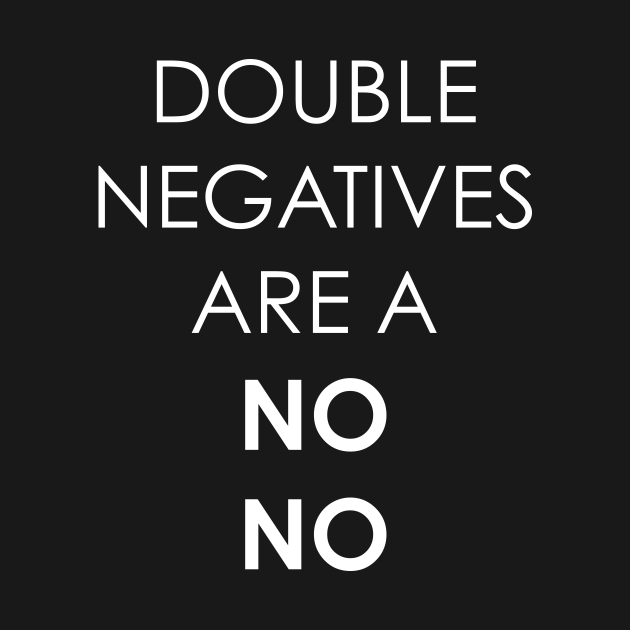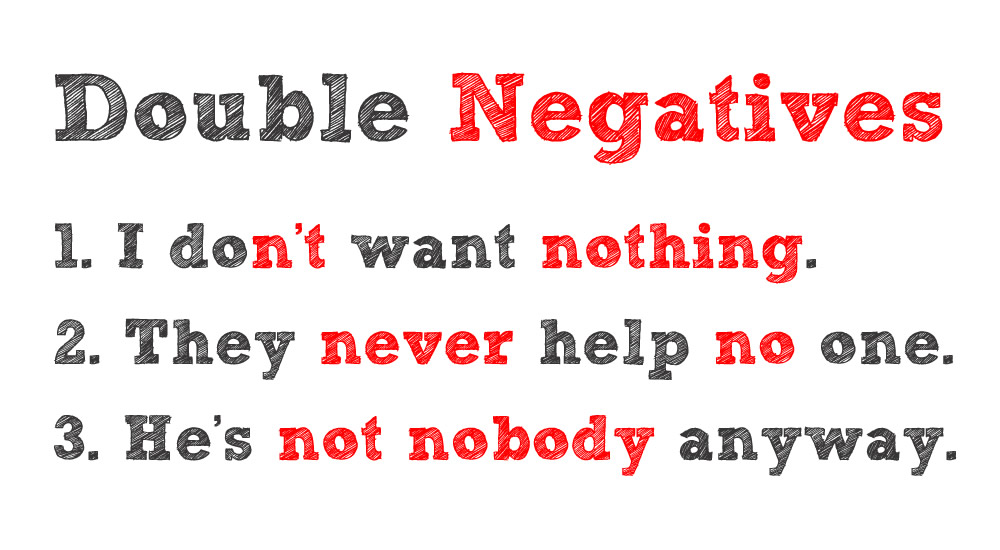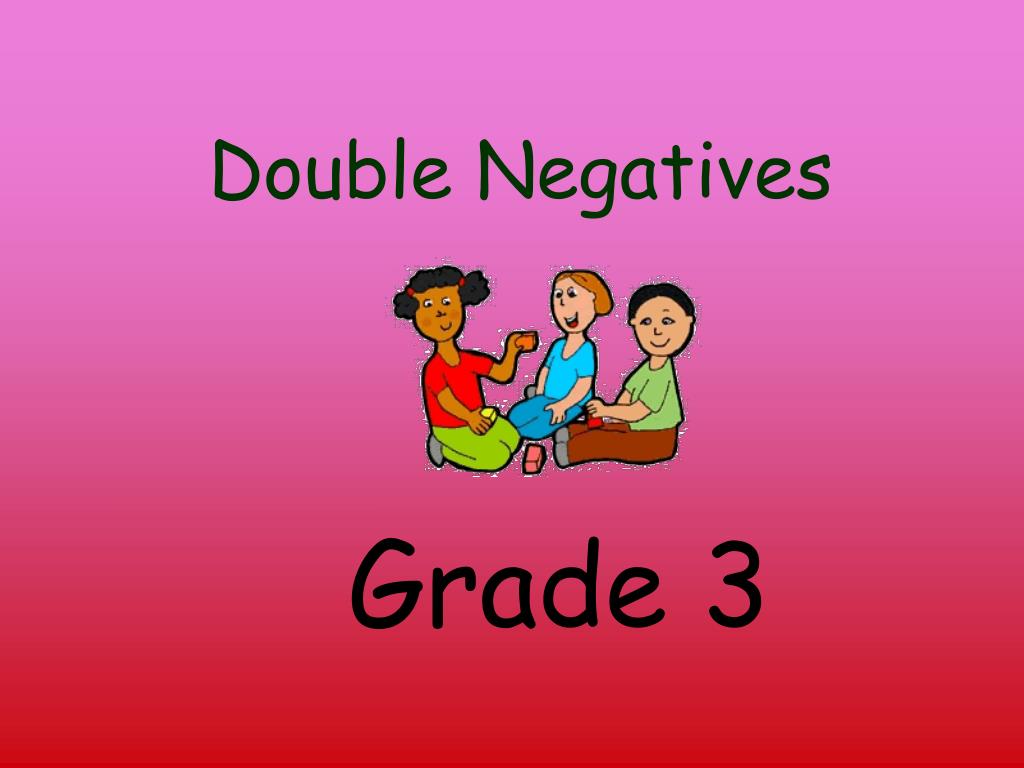
Paul said that he was “a citizen of no mean city” (Tarsus in Cilicia Acts 21:39), meaning that the city was important. Double Negative (Skeleton Milkshake) Lyrics Verse If you were here for the other night, youd be terrified You know, I think the lines youre afraid of are all made up (Oh-oh, oh-oh, oh-oh). The use of a negative before an adjective or adverb having a negative sense or with a negative prefix is also standard and is the figure of speech known as litotes, in which something is affirmed by denying its opposite: In the not unlikely event that the bill passes, prices will certainly rise. Occasionally a double negative strongly suggests an affirmative alternative: We cannot just say nothing about the problem ( We must say something about the problem ). Other uses of double negatives are fully standard. We thrive on collaboration and the creative energy this produces, and we are dedicated to delivering excellence on every project that we are involved with. Since the opening of our first studio in London in 1998 we’ve always focused on building close working relationships with filmmakers. They do not occur in educated speech or writing, where any and anything would be substituted for no and nothing in such examples. DNEG was built on feature film visual effects (VFX) work. Similar uses of double or multiple negation to reinforce or strengthen a negative are universally considered nonstandard in modern English: They never paid me no money. An oft-quoted line from Chaucer's Canterbury Tales (c1390) exemplifies the practice in earlier English: “He never yet no vileynye ne sayde” ( He never said anything discourteous ). Neanche per scherzo! – Don’t even joke about it! / Forget it!Ī final note, to watch out for the false negative finché non, which isn’t a negative at all! It means ‘until’ or ‘as long as’.Double or multiple negation was standard in English through the time of Shakespeare. Neanche per sogno! – Not even in your dreams! There are some common negative expressions which can be useful to learn, here is a selection: It is not unusual to use three or four negatives in one sentence, such as this:įlavia non dice mai niente a nessuno – Flavia never says anything to anyone


Non l’ho mica detto! – I didn’t say it at all! Non ho più sete – I am not thirsty anymore Non siete ancora arrivati? – Are you not there yet? Non … più – no longer, no more, not anymore There are other common expressions, such as Non ho né la sciarpa né i guanti, ho freddo! – I haven’t got a scarf or gloves, I’m cold! Non mi va di studiare né latino né matematica – I don’t feel like studying Latin or Maths Non mi ha nemmeno risposto – He didn’t even answer me Non andiamo mai in vacanza – We never go on holiday Non guardo mai la television – I never watch television Non c’è nessuno a casa – No one is at home Non sente nulla – She doesn’t hear anything In other words, to get the negative of 2, we multiply by -1. Essentially, we must first agree that a negative number is simply a positive number multiplied by -1. Non voglio mangiare niente – I don’t want to eat anything So after a discussion with TruthWorthy in another thread (where he attempted to show that a double positive made a negative), I looked into why a double negative makes a positive. You can use the Italian word for ‘not’ – non– in front of any of these negative expressions.

Neanche, nemmeno, neppure – not even, neither

Nessuno – nobody, no one, anybody, anyone However, in Italian you do use double negatives, or even triple or quadruple negatives!įirst let’s look at some common negative expressions. We don’t say ‘I didn’t do nothing’, or ‘I didn’t see nobody’. Funded by art patron Virginia Dwan and excavated by local real estate developer and heavy equipment operator. In English, the grammar rule is to only use one negative word in a sentence. Located on 60 acres amidst wide valleys and mesas in the Moapa Valley, approximately 65 miles northeast of Las Vegas, artist Michael Heizer conceived of this negative sculpture in 1969 and completed it a year later. You may also know that you add non before a verb to make a negative sentence, so if you wanted to say ‘I don’t want an ice cream’ you would say non voglio un gelato. In Italian, you might already know the word for ‘no’ – no (make sure you say it with an Italian accent!). When you’re talking in any language, it’s good to be able to say ‘I don’t want that’, or ‘I didn’t do that’.


 0 kommentar(er)
0 kommentar(er)
